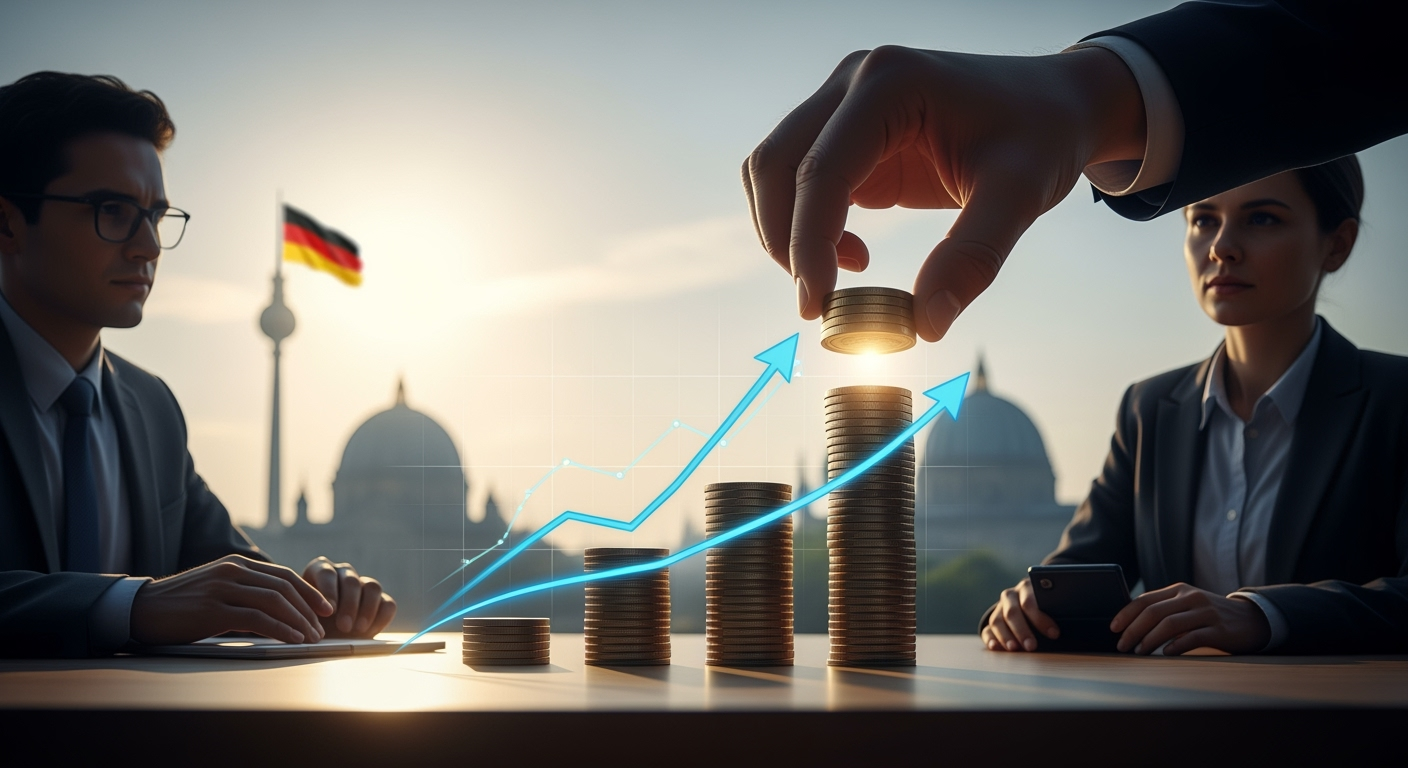Related Articles

Ecuadorian Government Decries 'Assassination Attempt' on President Noboa Amid Escalating Protests

French Political Stalemate Nears Resolution as New Prime Minister Expected Within 48 Hours





BERLIN – Germany’s economy is showing nascent signs of recovery, with the government significantly revising its growth forecasts upwards for the current year and the years ahead. This shift marks a hopeful, albeit modest, turn after two consecutive years of contraction for Europe's largest economy, signaling that domestic demand and strategic government investments are poised to counteract persistent global headwinds. The revised outlook, announced by the Economy Ministry, points to a fragile but determined push towards renewed prosperity, challenging a period defined by manufacturing slumps, elevated energy costs, and subdued export performance.
The German Economy Ministry, led by Katherina Reiche, officially updated its economic growth projections this week, offering a much-needed boost to national morale. For the current year, 2025, the ministry now anticipates a minimal but positive growth rate of 0.2%, a notable revision from its earlier forecast of zero growth. Looking further ahead, the projections suggest a more robust expansion of 1.3% for 2026 and 1.4% for 2027. This updated trajectory stands in stark contrast to the country's recent economic performance, which saw real Gross Domestic Product contract by 0.3% in 2023 and 0.2% in 2024, leaving the economy largely stagnant for a prolonged period. The new government, under Chancellor Friedrich Merz, has openly prioritized revitalizing the economy since taking office in early May, underscoring the political imperative behind these revised figures.
Contrary to typical recovery patterns where foreign trade often takes the lead, the anticipated upturn in Germany is primarily expected to be driven by strengthening domestic demand. Factors such as private consumption, public spending, and increased investment activity are identified as the key momentum generators. The government's forecast highlights that stable prices, rising wages, and tax relief measures are expected to bolster the disposable income of private households, encouraging increased consumer spending. Concurrently, higher employment levels are also projected to contribute to this domestic consumption surge.
A significant pillar of this renewed optimism stems from the government's substantial commitment to public investment. Chancellor Merz's administration has launched an ambitious program, including a 500 billion-euro fund earmarked for infrastructure and defense spending over the next 12 years. This fiscal injection, alongside a concerted effort to streamline bureaucracy and accelerate digitization, is anticipated to provide a considerable boost to economic activity. Companies, too, have shown confidence, with a group pledging investments totaling at least 631 billion euros in Germany over the next three years, including some previously planned projects, signifying a collective belief in the nation's economic future. The Bundesbank also noted that expansionary fiscal policy and reduced growth-dampening impacts from U.S. economic policy would lead to a marked recovery from 2026 onwards, with significant increases in government consumption and investment.
Despite the brighter outlook, Germany's path to sustained economic health remains fraught with challenges. The Economy Ministry candidly acknowledges that exports, historically a powerhouse of the German economy, are projected to decline by 0.1% in 2025. This weakness is attributed to ongoing global trade tensions, increasing protectionist measures (such as anticipated U.S. tariffs), and a loss of market share, particularly to major economies like China and the United States. This export-led growth model, once a cornerstone of Germany's economic prowess, is increasingly being questioned in a shifting global landscape.
Economy Minister Katherina Reiche emphasized that while the short-term projections offer relief, deeper, structural reforms are imperative to secure long-term growth. "We need to act, now," Reiche stated, highlighting the necessity to tackle critical issues such as high energy costs, burdensome tax rates by international standards, excessive bureaucracy, and the need to foster greater private investment and innovation. The country also faces long-standing structural weaknesses, including an aging population, which strains social welfare systems, a labor market marked by rigidities, and a slower-than-desired adaptation to emerging technologies and green transition demands. Furthermore, the government deficit is projected to increase again in 2026 and 2027, with public debt also expected to rise, suggesting fiscal complexities ahead even with improved growth.
The revised economic forecasts carry significant implications for various sectors of the German economy. The projected decline in unemployment, from 6.3% this year to 6.2% in 2026 and eventually 6.0% in 2027, suggests a positive trend for the labor market, potentially boosting consumer confidence further. While inflation figures were not a primary focus of the growth revision, other forecasts suggest it will stabilize, supporting real household incomes and consumption.
However, the cautionary tone accompanying the government’s announcement underscores the fragility of the recovery. Geopolitical uncertainties, particularly the "erratic trade and security policy of the USA" and potential counter-reactions from trading partners, remain significant risk factors. The need to clear a "reform backlog" and address deeply embedded structural issues will be paramount for Germany to move beyond minimal growth and regain its position as a robust economic engine. The government's updated projections, while a welcome development, serve as both a hopeful forecast and a clear call to action for comprehensive economic modernization.